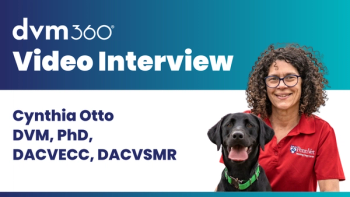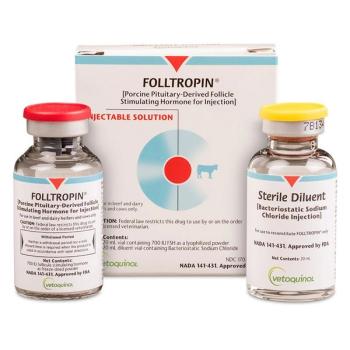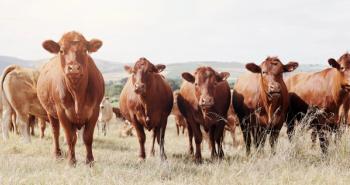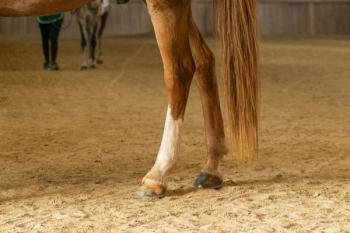
Surgical management of gastric dilatation and volvulus

A case walkthrough and insights into treating a patient diagnosed with gastric dilatation and volvulus (GDV)
Content submitted by NorthStar Vets, a dvm360® Strategic Alliance Partner
Thor, a 6-year-old, male great Dane presents with nonproductive vomiting and distended abdomen. Physical exam reveals normothermia, tachycardia (HR=160) and panting. He is hypersalivating, retching and has a distended, tympanic abdomen. Lab work shows hemoconcentration, leukocytosis characterized by a mature neutrophilia, an elevated ALT and a lactate of 7.4mmol/L. A right lateral abdominal radiograph shows a “double bubble” sign, and an electrocardiogram shows intermittent ventricular premature complexes (VPCs). Based on these findings Thor has been diagnosed with gastric dilatation and volvulus (GDV) and emergent stabilization and surgery is recommended.
The most common signalment for dogs presented with GDV are large-breed, deep-chested dogs such as great Danes, Weimaraners, and standard poodles. Abdominal distension, nonproductive retching, and restlessness are common presenting complaints and on physical exam, these patients may have signs of shock, abdominal distention with tympany, and splenomegaly. A diagnosis is made based on a right lateral abdominal radiograph which shows gastric dilation and pyloric malpositioning. This finding has been called the “double bubble” sign, “Smurf hat” and “Reverse C.” Bloodwork is commonly nonspecific, but plasma lactate can be used to evaluate perfusion, monitor resuscitation efforts and is prognostic for survival.
The exact cause of GDV is unknown, however risk factors such as being a large or giant breed, having a first degree relative had GDV, eating one meal per day, exercise, or stress after a meal and the presence of a gastric foreign body are known. The pathophysiology of GDV results from gastric distension and the clockwise rotation of the pylorus and proximal duodenum. The distended stomach compresses vena cava leading to decreased venous return and hypotension. Additional pathology includes the release of myocardial depressant factor leading to poor blood flow and arrhythmias (40-70% of dogs), gastric wall necrosis from increased intragastric pressures and avulsion of short gastric arteries and reperfusion injury
Prior to surgery, emergent stabilization is performed which includes the placement of 2 large bore IV catheters, fluid therapy (crystalloids +/- colloids), oxygen therapy, pain medications (full μ-agonists such as fentanyl, methadone, hydro) and antiemetics. An ECG should be evaluated to determine if VPCs or ventricular tachycardia are present. If VPCs ventricular or tachycardia are seen, a lidocaine bolus followed by CRI administration should be administered. Preoperative gastric decompression should be performed and can be accomplished by trocarisation or passage of an orogastric tube. Trocarisation is performed using a large bore catheter which is placed over area of greatest tympany; care must be taken to avoid accidental penetration of the spleen. Orogastric intubation offers a more rapid decompression and involves placement of a tube, measured from nares to caudal edge of last rib, into the stomach to remove gas and fluid.
Surgery is the definitive treatment for GDV with the goals of repositioning the stomach, removal of devitalized tissue and performing a gastropexy. First, intraoperative stomach decompression can be facilitated by passing an orogastric tube or using a 22g needle hooked to suction. To correct the gastric malposition, the pylorus is pulled in a counterclockwise direction while simultaneously pushing the body of the stomach. Once derotated, the stomach and spleen are assessed. The greater curvature of the stomach is the most common area for devitalization and if compromised should be resected or invaginated. If the spleen is necrotic or thrombosed, a splenectomy is performed. Finally, a gastropexy is performed to prevent recurrence.
Postoperatively, supportive care and monitoring is continued, including monitoring for arrhythmias. Complications include Incisional infection, peritonitis, sepsis, and vomiting. Recurrence rates following gastropexy are minimal with an excellent prognosis for survival (90%).
Newsletter
From exam room tips to practice management insights, get trusted veterinary news delivered straight to your inbox—subscribe to dvm360.






